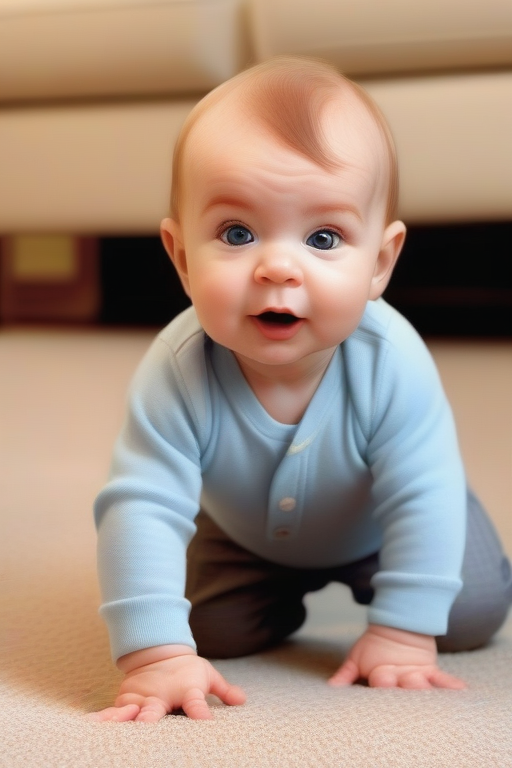A baby’s development is an exciting time for all the adults responsible for the baby’s care. This process is a situation that increases the anxiety of parents from time to time. However, when we look at the developmental process of babies, each new process is a turning point that causes a different excitement.
One of the biggest curiosities for families watching their baby grow and develop is when the baby will start crawling. When a baby starts crawling is a happy process for all families. Crawling is very important for the physical development of babies. Growth spurts in babies are important for physical and emotional development and parents should be prepared for these periods.
How Many Months Old Do Babies Crawl?
Babies start crawling between 6 and 9 months. Babies who start to be fed with solid food slowly start to get physically stronger. Babies who become physically stronger over time begin to be able to stand upright without support.
What should be considered when a baby crawls?
- Adults whose baby is about to start crawling should ensure safety in all areas of the house that the baby can reach. When the baby starts to crawl, he/she will naturally become curious and explore the environment. In particular, sharp objects and sockets should be hidden, and the house should be kept clean and have a baby-friendly hygiene.
- Space should be created for the baby to crawl. The baby should be kept on a flat surface on the floor where it can move and crawl easily.
- Babies can be physically encouraged to crawl witha little exercise and baby massage. As the strength in their joints increases, babies can sit upright and then begin to crawl. This is a positive sign that babies’ physical development is progressing correctly.
- The baby’s ability to sit upright without support is a sign that the baby is now at the crawling level. Atthis point, the baby shows signs of crawlingby moving .
- Adults should be prepared for when the baby will crawl. In such cases, parents should encourage the baby to crawl. It can be encouraging to place a favorite toy within crawling distance of the baby. At the same time, the way adults react will also be encouraging for the baby.
- Adults who see their baby crawling should act calmly and not appear anxious. They should not interfere with the baby’s crawling efforts and should not limit the area and duration of the baby’s crawling.
Some babies can start walking without crawling. If your baby is not crawling, it is important to observe their movements. Over time, parents will be able to recognize their baby’s tendencies by the way he or she moves. Trust yourself and the relationship you have with your baby.
All content available on the mommybabybliss.com website, including text, images, audio or other formats, is created for informational purposes only. The content is not intended to replace professional medical advice, diagnosis or treatment. Always seek the advice of your physician or other qualified health care professional for any questions you may have regarding a medical condition. Never disregard or delay seeking professional medical advice from an article read on the website.

